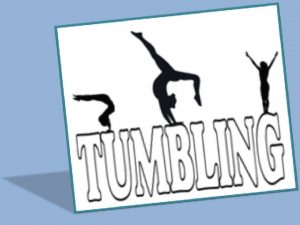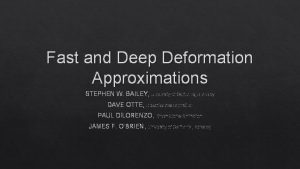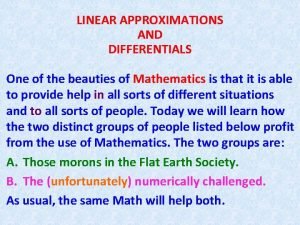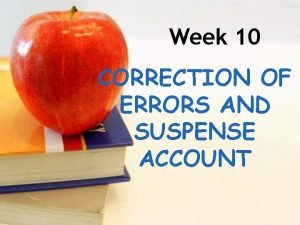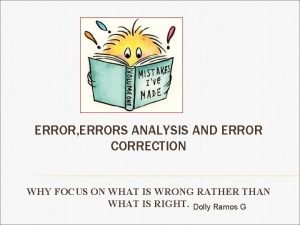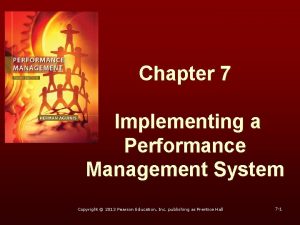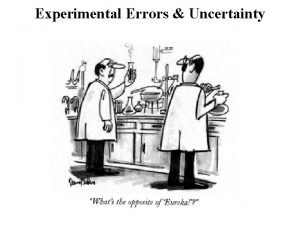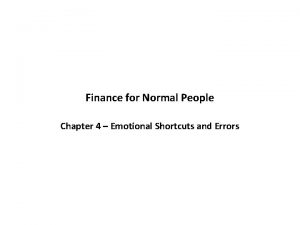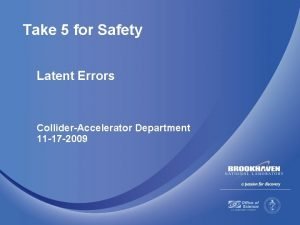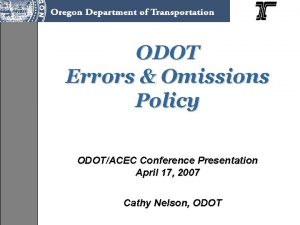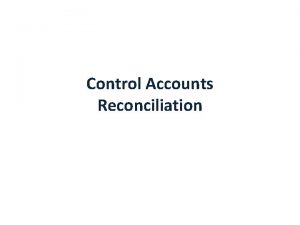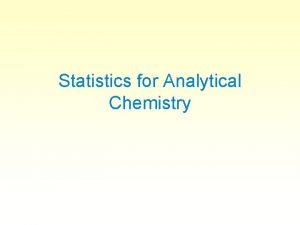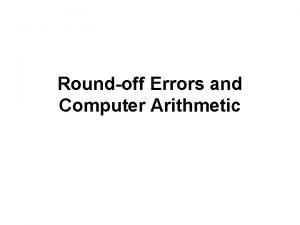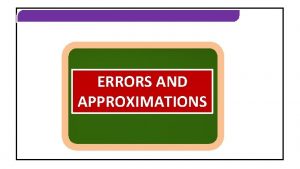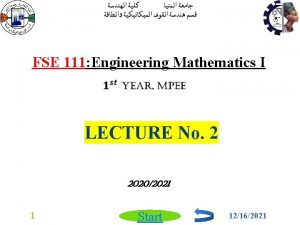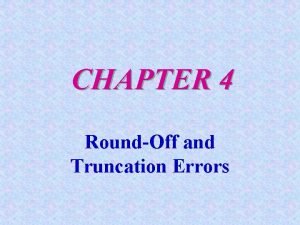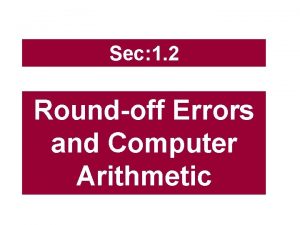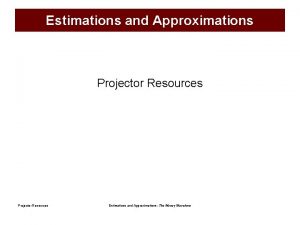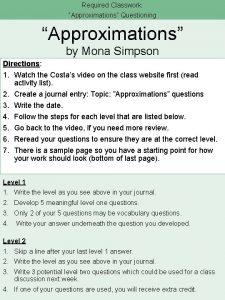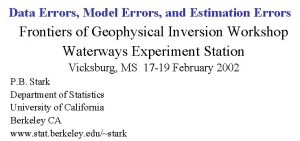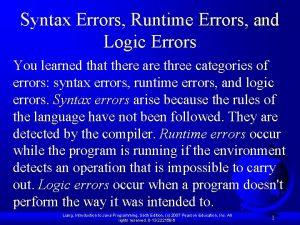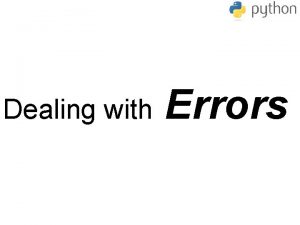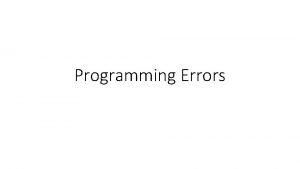Approximations and RoundOff Errors Chapter 3 1 Copyright














- Slides: 14

Approximations and Round-Off Errors Chapter 3 1 Copyright © 2006 The Mc. Graw-Hill Companies, Inc. Permission required for reproduction or display.

• Numerical methods yield approximate results that are close to the exact analytical solution. • How confident we are in our approximate result ? In other words, “how much error is present in our calculation and is it tolerable? ” Significant Figures • Number of significant figures indicates precision. Significant digits of a number are those that can be used with confidence, e. g. , the number of certain digits plus one estimated digit. 53, 800 How many significant figures? 5. 38 x 104 5. 3800 x 104 3 5 Zeros are sometimes used to locate the decimal point not significant figures. 0. 00001753 4 0. 001753 4 2 Copyright © 2006 The Mc. Graw-Hill Companies, Inc. Permission required for reproduction or display.

Identifying Significant Digits http: //en. wikipedia. org/wiki/Significant_figures • All non-zero digits are considered significant. For example, 91 has two significant figures, while 123. 45 has five significant figures • Zeros appearing anywhere between two non-zero digits are significant. Ex: 101. 1002 has seven significant figures. • Leading zeros are not significant. Ex: 0. 00052 has two significant figures. • Trailing zeros in a number containing a decimal point are significant. Ex: 12. 2300 has six significant figures: 1, 2, 2, 3, 0 and 0. The number 0. 000122300 still has only six significant figures (the zeros before the 1 are not significant). In addition, 120. 00 has five significant figures. • The significance of trailing zeros in a number not containing a decimal point can be ambiguous. For example, it may not always be clear if a number like 1300 is accurate to the nearest unit. Various conventions exist to address this issue. Copyright © 2006 The Mc. Graw-Hill Companies, Inc. Permission required for reproduction or display.

Error Definitions True error: Et = True value – Approximation (+/-) Approximate Error • For numerical methods, the true value will be known only when we deal with functions that can be solved analytically. • In real world applications, we usually do not know the answer a priori. Approximate Error = Current. Approximation(i) – Previous. Approximation(i-1) Copyright © 2006 The Mc. Graw-Hill Companies, Inc. Permission required for reproduction or display.

Iterative approaches Computations are repeated until stopping criterion is satisfied Pre-specified % tolerance based on your knowledge of the solution. (Use absolute value) If εs is chosen as: Then the result is correct to at least n significant figures (Scarborough 1966) 5 Copyright © 2006 The Mc. Graw-Hill Companies, Inc. Permission required for reproduction or display.

EXAMPLE 3. 2: Maclaurin series expansion Calculate e 0. 5 (= 1. 648721…) up to 3 significant figures. During the calculation process, compute the true and approximate percent relative errors at each step Error tolerance MATLAB file in: C: ERCAL228MATLAB3EXPTaylor. m Count Result εt (%) True 1 1 1 39. 3 1+(0. 5) 2 1. 5 9. 02 33. 3 1+(. 5)2/2 3 1. 625 1. 44 7. 69 1+(. 5)2/2+(. 5)3/6 4 1. 6458333 0. 175 1. 27 5 1. 6484375 0. 0172 0. 158 6 1. 648697917 0. 00142 0. 0158 Terms εa (%) Approx. 6 Copyright © 2006 The Mc. Graw-Hill Companies, Inc. Permission required for reproduction or display.

Round-off and Chopping Errors • Numbers such as p, e, or √ 7 cannot be expressed by a fixed number of significant figures. Therefore, they can not be represented exactly by a computer which has a fixed word-length p = 3. 1415926535…. • Discrepancy introduced by this omission of significant figures is called round-off or chopping errors. • If p is to be stored on a base-10 system carrying 7 significant digits, chopping : p=3. 141592 error: et=0. 00000065 round-off: p=3. 141593 error: et=0. 00000035 • Some machines use chopping, because rounding has additional computational overhead. 7 Copyright © 2006 The Mc. Graw-Hill Companies, Inc. Permission required for reproduction or display.

Number Representation 86409 in Base-10 173 in Base-2 8 Copyright © 2006 The Mc. Graw-Hill Companies, Inc. Permission required for reproduction or display.

The representation of -173 on a 16 -bit computer using the signed magnitude method 9 Copyright © 2006 The Mc. Graw-Hill Companies, Inc. Permission required for reproduction or display.

Computer representation of a floating-point number exponent mantissa Base of the number system used 10 Copyright © 2006 The Mc. Graw-Hill Companies, Inc. Permission required for reproduction or display.

156. 78 0. 15678 x 103 (in a floating point base-10 system) Suppose only 4 decimal places to be stored • Normalize remove the leading zeroes. • Multiply the mantissa by 10 and lower the exponent by 1 0. 2941 x 10 -1 Additional significant figure is retained 11 Copyright © 2006 The Mc. Graw-Hill Companies, Inc. Permission required for reproduction or display.

• Due to Normalization, absolute value of m is limited: for base-10 system: for base-2 system: 0. 1 ≤ m < 1 0. 5 ≤ m < 1 • Floating point representation allows both fractions and very large numbers to be expressed on the computer. However, – Floating point numbers take up more room – Take longer to process than integer numbers. Q: What is the smallest positive floating point number that can be represented using a 7 -bit word (3 -bits reserved for mantissa). What is the number? (* Solve Example 3. 4 page 61 *) Another Exercise: What is the largest positive floating point number that can be represented using a 7 -bit word (3 -bits reserved for mantissa). 12 Copyright © 2006 The Mc. Graw-Hill Companies, Inc. Permission required for reproduction or display.

IEEE 754 double-precision binary floating-point format: binary 64 This is a commonly used format on PCs. • Sign bit: 1 bit • Exponent width: 11 bits • Significand precision: 53 bits (52 explicitly stored) This gives from 15– 17 significant decimal digits precision. If a decimal string with at most 15 significant digits is converted to IEEE 754 double precision representation and then converted back to a string with the same number of significant digits, then the final string should match the original. The real value assumed by a given 64 -bit double-precision datum with a given biased exponent e and a 52 -bit fraction is: = Between 252=4, 503, 599, 627, 370, 496 and 253=9, 007, 199, 254, 740, 992 the representable numbers are exactly the integers. Copyright © 2006 The Mc. Graw-Hill Companies, Inc. Permission required for reproduction or display.

Notes on floating point numbers: • Addition of two floating point numbers (exponents should be the same) • Multiplication • Overflow / Underflow very small and very large numbers can not be represented using a fixedlength mantissa/exponent representation, therefore overflow and underflow can occur while doing arithmetic with these numbers. • Double precision arithmetic is always recommended • The interval between representable numbers increases as the numbers grow in magnitude and similarly, the round-off error. 14 Copyright © 2006 The Mc. Graw-Hill Companies, Inc. Permission required for reproduction or display.
 Backward roll in cheerdance
Backward roll in cheerdance Fast and deep deformation approximations
Fast and deep deformation approximations Linear approximations and differentials
Linear approximations and differentials Suspense account and errors
Suspense account and errors Receptive and productive errors
Receptive and productive errors By and large what is the cause of intentional rating errors
By and large what is the cause of intentional rating errors Define experimental error
Define experimental error Random and systematic errors examples
Random and systematic errors examples Emotional shortcuts and errors
Emotional shortcuts and errors Criminal addictive thinking worksheets
Criminal addictive thinking worksheets Latent errors
Latent errors Errors and omissions definition construction
Errors and omissions definition construction Reconcile control accounts
Reconcile control accounts There are two equal and opposite errors
There are two equal and opposite errors Differentiate determinate and indeterminate errors
Differentiate determinate and indeterminate errors
